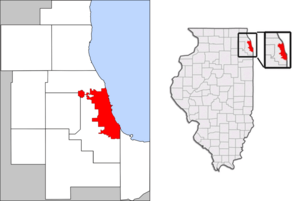 |
Barcelona the second largest city in Spain and is located directly on the northeastern Mediterranean coast of Spain, has a rich history dating back at least 2,000 years when it gained prominence as a Roman town. In 1992, Barcelona gained international recognition by hosting the Olympic games which brought a massive uptick to the tourism industry in the city. Barcelona is today one of the world's leading tourist, economic and cultural-sports centres, and its influences in commerce, education, entertainment, media, fashion, science, and the arts all contribute to its status as one of the world's major global cities. Barcelona is today an important cultural centre and a major tourist destination and has a rich cultural heritage. Particularly renowned are architectural works of Antoni Gaudí and Lluís Domènech i Montaner that have been designated UNESCO World Heritage Sites.
The founding of Barcelona is the subject of two different legends. The first attributes the founding of the city to the mythological Hercules 400 years before the building of Rome. The second legend attributes the foundation of the city directly to the historical Carthaginian Hamilcar Barca, father of Hannibal, who named the city Barcino after his family, in the 3rd century BC.
Climate
Barcelona has a Mediterranean climate. with mild, humid winters and warm, dry summers. Barcelona is located on the eastern coast of the Iberian Peninsula, so Atlantic west winds often arrive in Barcelona with low humidity, producing no rain. The proximity of the Atlantic, its latitude, and the relief, are the reasons why the summers are not as dry as in most other Mediterranean Basin locations. Lows (not surface lows but high-atmospheric "cold invasions") can easily affect the area of Barcelona, causing storms, particularly in August. Some years, the beginning of June is still cool and rainy, like April and May. Together with August, September, October and November these months are the wettest of the year. The driest are February, March, June and July. As in many parts of Catalonia, the annual weather pattern varies greatly from year to year. Snowfalls are rare, seldom causing any disruption to traffic, but frost at night is common on the outskirts of the city. Thunderstorms, which occasionally reach severe limits, are common from mid August until November. Though Barcelona is normally not a windy city, it is affected by sea breezes from May/June to September and winds from the west and northwest in winter. Barcelona is generally a sunny city, however, some days of fog and spells of cloudy days are not rare. Sea fog is frequent in early spring, when the first warm African air masses come in over the cold sea water. Cloudy days are most frequent from April to October/November.
Arrival
August is probably the busiest time in Barcelona; at the same time about 10% of shops and restaurants can be found closed from mid-August to early September, when the owners go on vacations. You'll find cheap accommodation and a much quieter city as a vast majority of Spaniards go on vacation in August. Business is low, people from Barcelona tend to be on vacation, hotels that remain open but don't have their business customers tend to lower prices and make offers. However there will still be plenty of tourists. Barcelona has decent enough beaches but the locals will really appreciate it if visitors do not consider it a beach resort and don't wear beachwear when visiting churches, restaurants, etc.
Low cost carriers operating to Barcelona from many major cities. Barcelona International Airport, also known as El Prat, is a major transport hub and fields flights from all over Europe and beyond. The airport is only about 10 km away from the city center. Airport transfers can be arranged for groups, taxis are available but expensive (€20-30 to the city center). Taxis and Minibuses can be pre-booked online.
Several trains per day (including overnight hotel trains) from other parts of Europe (via France) are regular & reliable. There are three main stations.Barcelona-Sants (to the south west of the center), Barcelona-Passeig de Gràcia (in the center of the city), and Barcelona-Estació de França, Avinguda Marquès de l´Argentera (on the edge of the old town next to the seafront district of Barceloneta).
You can also get in by sea. The city's port is one of the busiest on the Mediterranean. It supports both ferries and cruise ships.
Get Around
The Bus Turístic links all of the Barcelona tourist sites you could possibly want to visit. You can buy tickets at the bus stops and elsewhere (e.g., better hotels) valid for one day (€23) or two consecutive days (€30). The metro is also a best way to get around Barcelona. A one-journey ticket cost €1.45, so it's best to buy a multi-person 10-ride ticket for €8.25 for Zone 1 which includes most tourist areas (called a T-10) or a personal 50-ride monthly ticket for €33.10. These tickets are also valid on the buses, trams, FGC (Catalan Railway Network) and on the main Spanish Trains (RENFE). 1- to 5-day public transport tickets are available that allow unlimited travel on the metro and bus networks (€5.90 for one day, €11.20 for two days, €23.10 for five days). Metro operating hours are: Sunday and Mon-Thur 5:00 to






